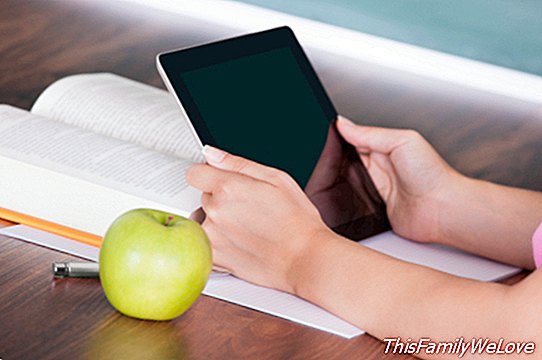The tablet in the classroom: error or success?
In many schools, teachers now start their classes with the phrase "Turn on your tablets", which has replaced the old "Open your books by page 34". It is a fact: most schools will end up implementing digital education in their classrooms. But what is the method of using the tablet in the classroom?
With the introduction of tablets in schools it is about making boring and arduous activities for students much more enjoyable, that is, that the dynamics in the classes are attractive, through all the teaching resources and, in particular, audiovisual and interactive guided by the teacher. This is obtained with the use of different multimedia formats that allow to work different processing channels with their appropriate tools.
Once the overview of the applications available to children through the tablets is made, the mechanism of the classes is already the teacher's mission. In this way, parents are the first to accept that with the tablets in the classroom the participation of the students is encouraged and the class is gamified, always under the control of the teacher, who verifies the evolution of the children in the different subjects, in an individualized way and day by day.
Studying with tablets sweetens the effort

The work with tablets favors an analytical and sequential presentation of the information. The interactive nature gives students greater perception of control, makes them feel protagonists of their own learning and allows them to self-regulate, in addition to providing a playful character to the class that sweetens the effort.
With these devices, the variety of things that can be done increases, as well as their effectiveness. It replaces the textbooks, which are all stuck in the device. In addition, the amount of exercises and training activities that can be done is abundant, thanks to applications for coloring, simulations of exams, dictionaries, educational and language games, concept maps ...
Of course, there will always be a teacher who mediates between the students and how to use these devices. He himself is the one that encourages that motivation that creates the use of the tablet. With all this, the teacher will better capture the attention of their students.
Another advantage that involves the use of these digital devices is the ease to adjust the language you want. For children to adapt as soon as possible to English, for example, the best option is to set up the tablet in this language, and so students never stop contacting English.
The tablet: not everything is advantage
Now, is it really necessary? Is giving each student an iPad the best we can do? Like everything, it has its drawbacks.
1. Writing The first disadvantage of digital tablets that is obvious is that related to writing, since it is one of the main skills that students must learn. Children have to start from a young age to write a lot, and the entry of a tablet into the classroom slows down this activity. In addition, writing on a touch keyboard is sometimes clumsy, and that does not help the little ones.
2. Visual health. We always tell our children to separate from television, because closeness can be harmful to their eyes. And then, what about the tablet? Care should also be taken with this use, so that it does not harm the children's visual health.
3. Addiction to new technologies. The problem of a possible dependence on electronic devices is another disadvantage of tablets in the classroom. It is very important to teach children to self-control and use the device only when necessary. In addition, it is clear that the information that students receive through a tablet is greater than in the traditional system. Receiving so many stimuli can overwhelm them, that is, confuse and misinform them.
In conclusion, like everything else, the use of these devices in schools must be properly supervised by teachers and parents, and an adequate accompaniment to the child's age.
Gonzalo Medina




